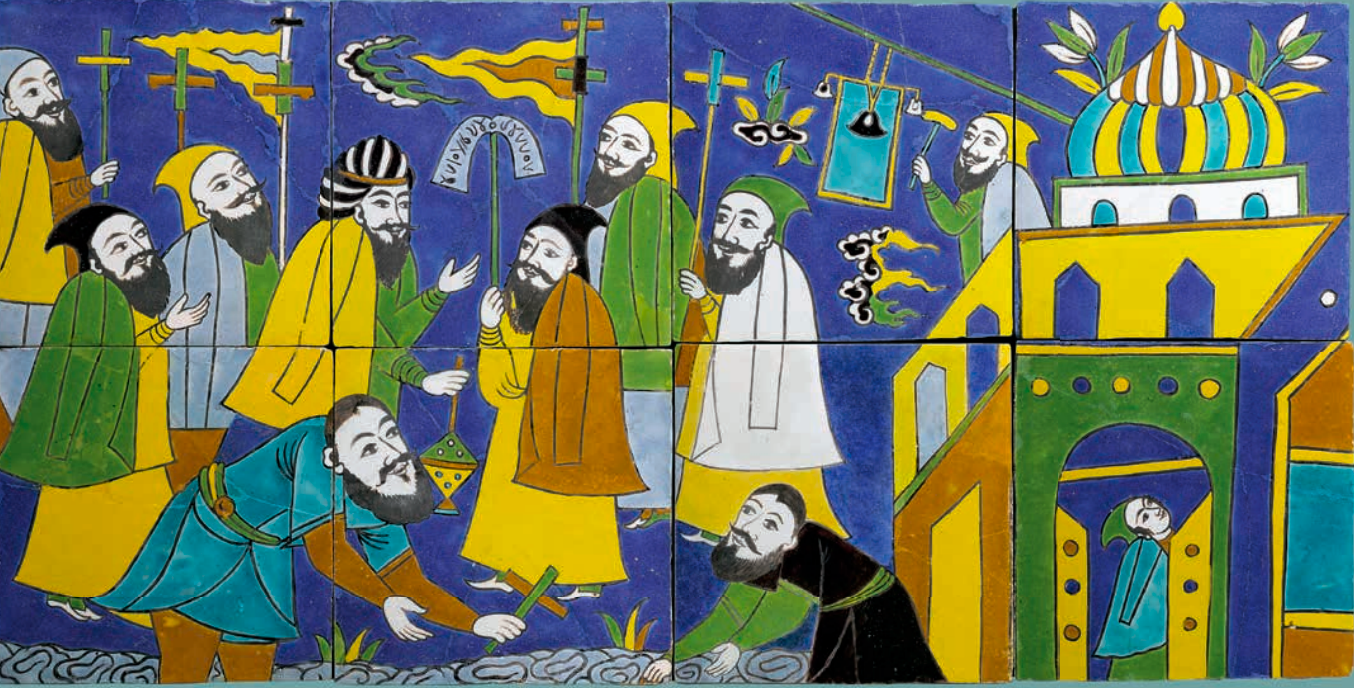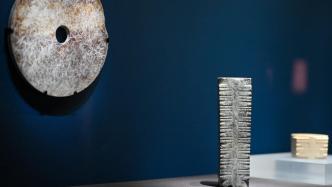
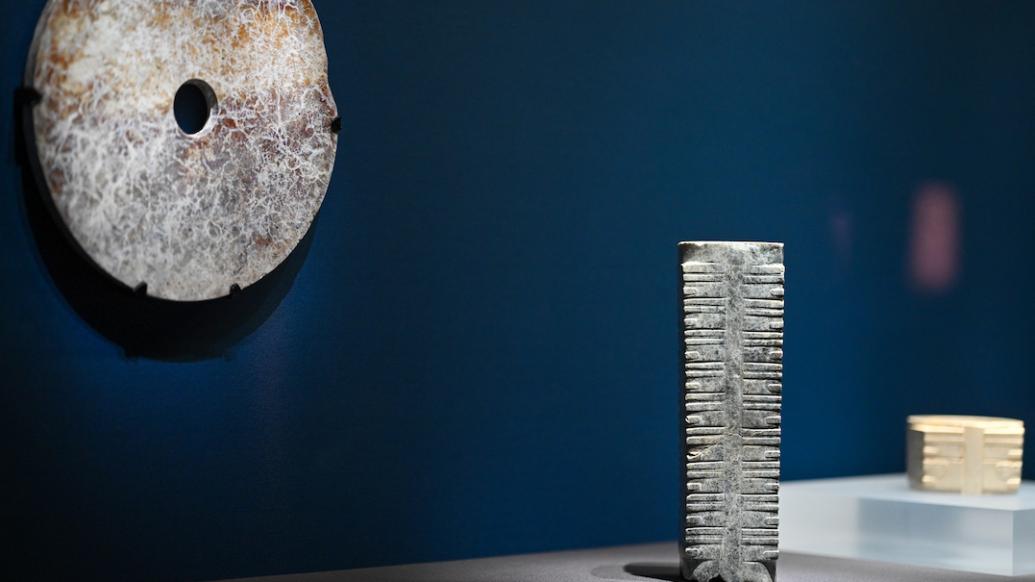
More than 5,000 years ago, the largest and heaviest Lingjiatan cultural stone pig unearthed so far, the "cute" human-head pottery vase, and the Liangzhu culture " Cong Wang", the most exquisite prehistoric ivory scepter unearthed from the Fuquanshan site in Shanghai... These heavyweight cultural relics in the history of Chinese archaeology gathered in Shanghai for the first time without precedent.
The highly anticipated Shanghai Museum "Why China" cultural relics and archeology exhibition series second exhibition "Evidence of China: Songze·Liangzhu Civilization Archeology Special Exhibition" opened at the Shanghai Museum on the afternoon of June 19. The Paper saw at the scene that the exhibition, through 358 cultural relics, presents the greatest achievements in the first peak of civilization development represented by Songze Culture and Liangzhu Culture from 5,800 to 4,300 years ago. Chu Xiaobo, curator of the Shanghai Museum, said that the lower reaches of the Yangtze River are the most typical representative of the development of early regional civilization in China, and an in-depth study of its evolution, characteristics and influence will be of great importance for in-depth understanding of the formation of multi-integrated Chinese civilization and the discussion of the characteristics of Chinese civilization effect.
Stone pigs, "King Songze" and "King Liangzhu" met for the first time

exhibition site
This exhibition brings together 358 unearthed cultural relics collected by 19 museums and archaeological institutions across the country, of which more than 90% are precious cultural relics, and more than one third are the latest archaeological achievements that debuted. Starting from the four major sections of ancient country, rice farming, handicraft industry and jadeware, the exhibition showcases the charm of prehistoric culture and art in the lower reaches of the Yangtze River, and presents the 5,000-year civilization of China.
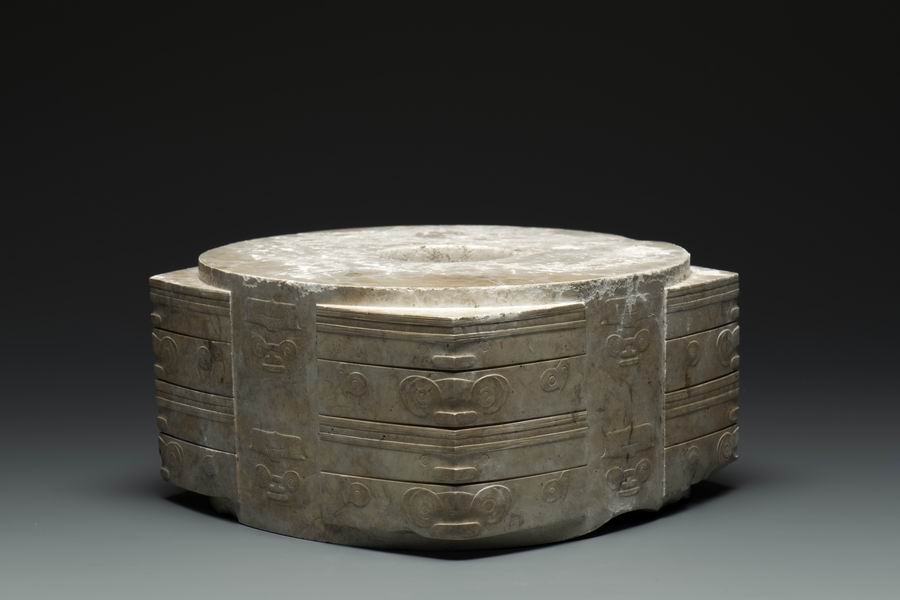
Cong Wang Fanshan M12: 98-1
According to Zhou Yun, a librarian of the Archaeological Research Department of the Shanghai Museum, after the theme of the exhibition was determined, they basically traveled all over the important collection units in the Yangtze River Delta during this period. The original 320 pieces (groups) reached 358 pieces (groups). The exhibition line of this exhibition also breaks through the previous way of narrating time. It is formulated based on the latest understanding of the early civilization peaks of the lower reaches of the Yangtze River and academic research results. It is divided into four major sections: ancient civilization, rice farming civilization, handicraft civilization, and jade civilization. , each section is narrated around a theme, and the styles presented in each exhibition hall are also different.
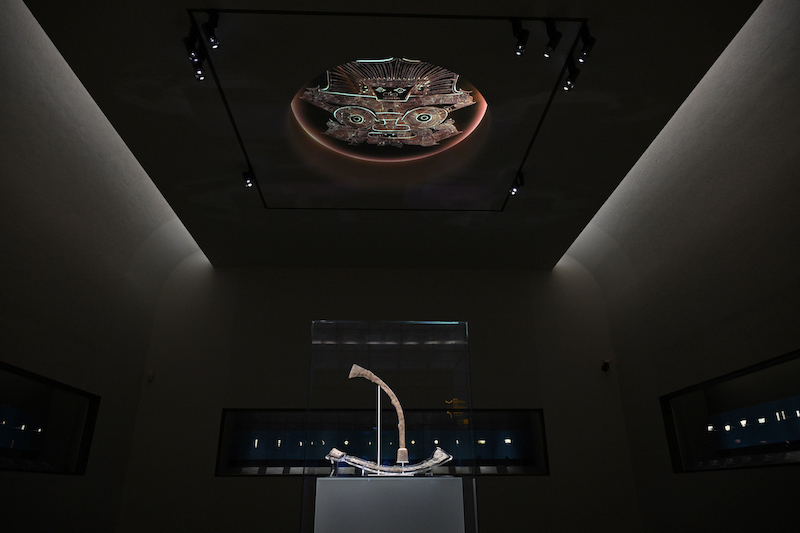
exhibition site
The highlights of the exhibition are frequent, and the exhibits are exquisite. A pottery vase with a human head, a typical artifact of the Songze Culture, the earliest, largest and heaviest stone pig at the Lingjiatan site (weighing 88 kg) discovered by archaeologists in my country, the "Three Great Artifacts" of King Liangzhu - "King Cong" "The King of Yue" and the jade scepter, the earliest openwork of human, bird and animal patterns discovered so far - from the openwork jade human head decoration to the most exquisite prehistoric ivory products - the ivory scepter unearthed from the Fuquanshan site in Qingpu, Shanghai...Shanghai The museum brings together the "treasures of town halls" of many cultural and museum institutions.
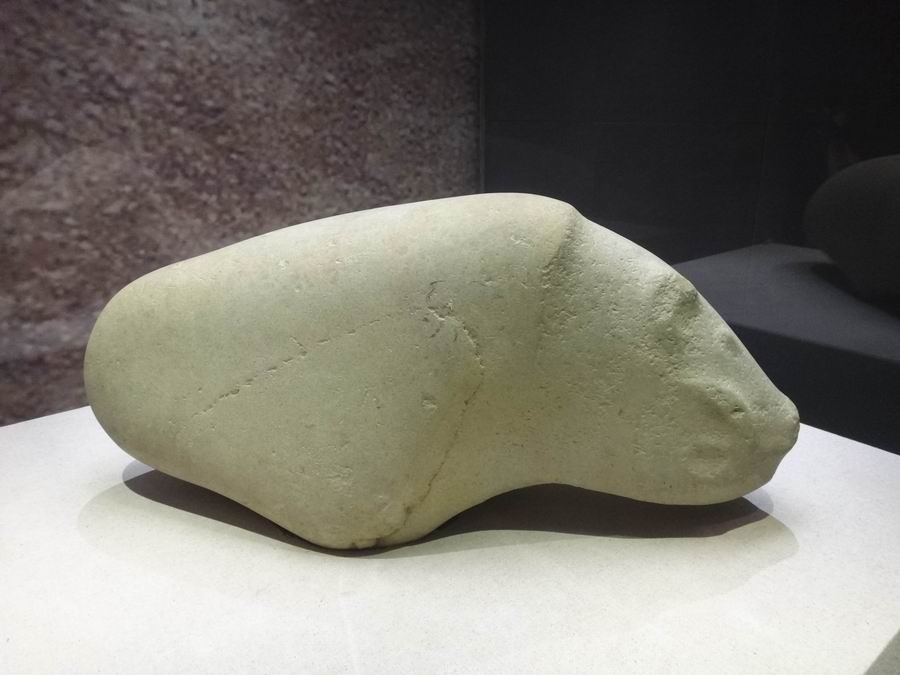
The stone pig, weighing 88 kilograms, is carved in the round. Looking carefully, the pig has a complete mouth, nostrils, eyes, ears, and a pair of fangs. The ancestors of Lingjiatan more than 5,000 years ago had already portrayed the image of the pig quite realistically.
"We selected the most wonderful cultural relics of that period, and each cultural relic is basically a cultural relic of their main exhibition line or central display cabinet." Zhou Yun said, for example, the stone pig of Lingjiatan Culture came from the center of Anhui Museum. The showcase was removed. It is the largest, earliest, and heaviest pig-shaped sculpture unearthed so far. This time it was only on a "business trip" in Shanghai for one month. The treasure of the Zhejiang Provincial Museum, "Cong King", is by far the largest and most exquisitely carved jade cong, because it will be unveiled in the new building of the Zhejiang Provincial Museum at the end of the month, and it will only be on display at Shanghai Expo for 20 days.

exhibition site
As one of the highlights of the exhibition, this exhibition is also an unprecedented collection of cultural relics unearthed from the tombs of the five most prominent kings among the five important representative sites for the first time.
"During this period, the stratification of the kingship and the state emerged, so in the first section, the five most important sites from the Songze to Liangzhu period were selected, including the site of Dongshan Village in Zhangjiagang City, Jiangsu Province, and Hanshan County in Ma'anshan City, Anhui Province. The Lingjiatan ruins also include the Fanshan ruins in Liangzhu, Zhejiang, the Fuquanshan ruins in Shanghai, and the Sidun ruins in Changzhou, Jiangsu province.” Chen Jie, deputy director of the Shanghai Museum, said.
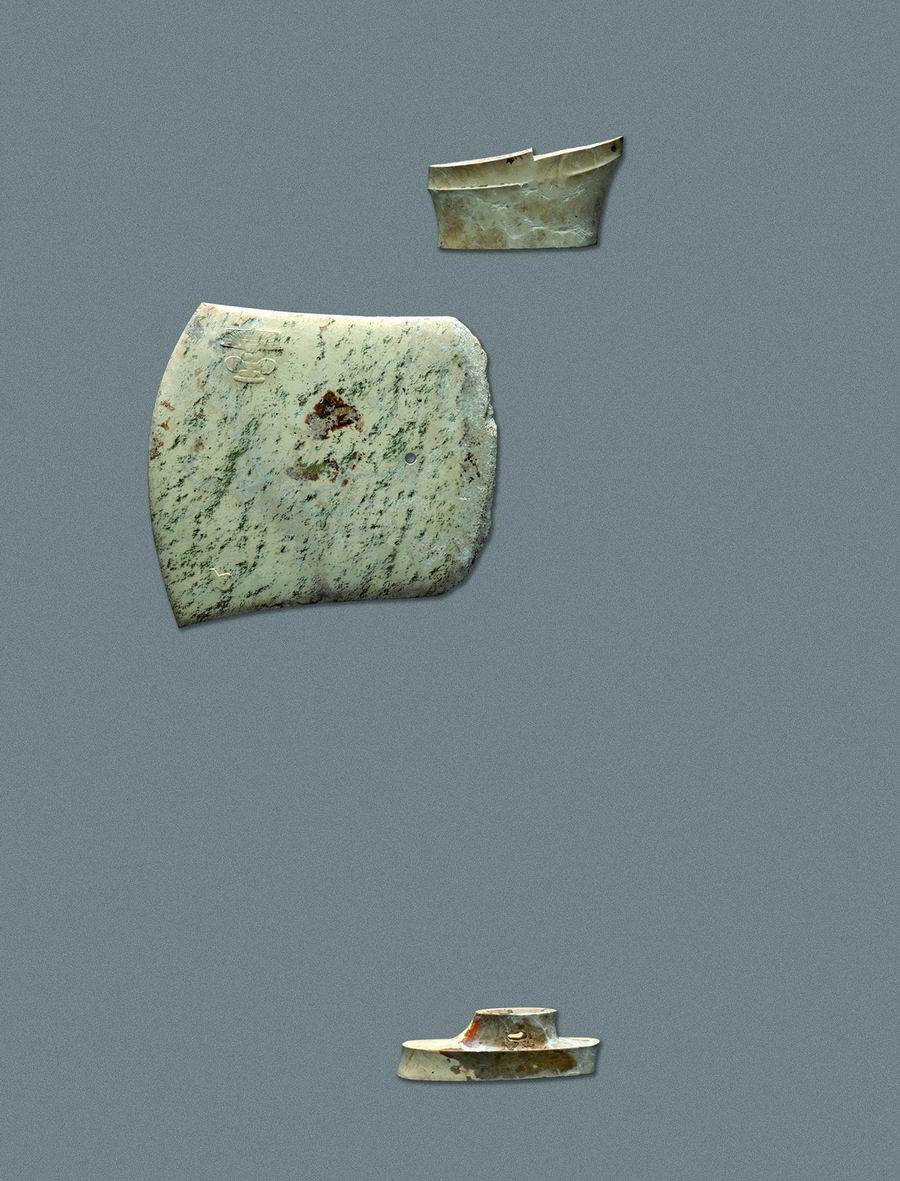
Yue Wang
Among them, the Dongshan Village site is the site with the highest level of Songze culture discovered so far, especially the Dongshan Village tomb M90 displayed in the exhibition, which is also called "Songze King" by scholars. The Lingjiatan site has a large site area, and the unearthed cultural relics are also very exciting. This exhibition is an overall display of the cultural relics unearthed from its No. 23 tomb; as an urban site of early civilization, the Liangzhu site has a higher degree of development. Many cemeteries in the nature of royal tombs have been found in the Liangzhu site, and the Fanshan site is the most important representative of them. This exhibition is also the first time that the three important artifacts unearthed from Tomb No. 12, the highest level in the Fanshan cemetery - "Cong King", "Yue King" and Jade Scepter are brought together for display.
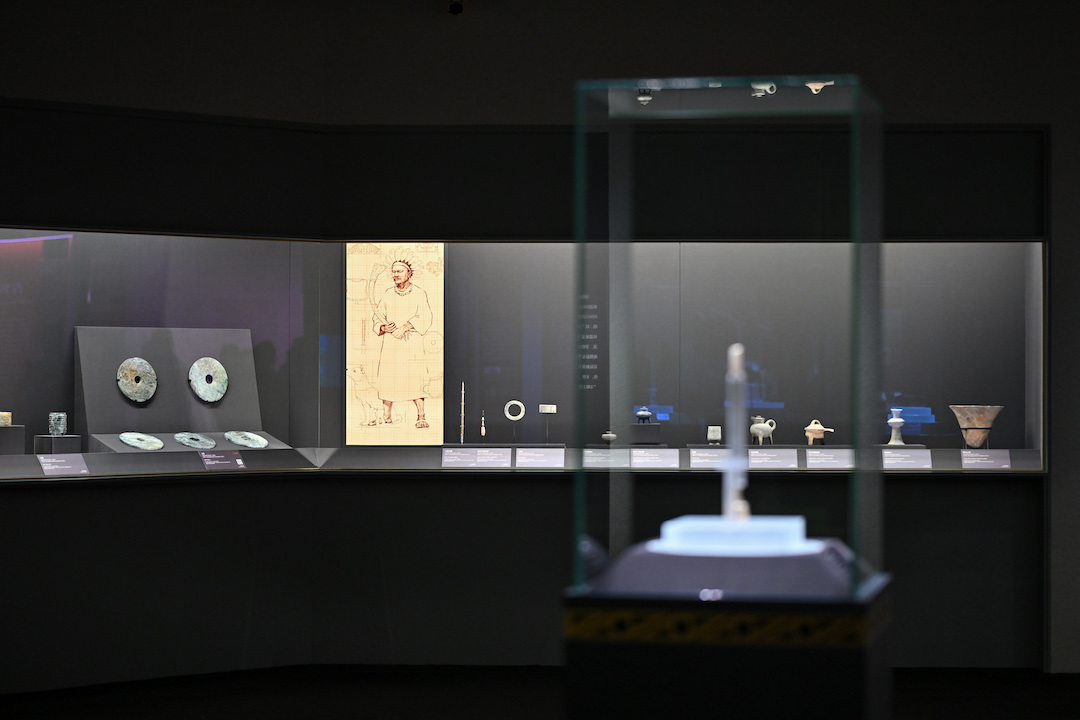
exhibition site
Present the vivid scene of "starry sky"
More than 5,000 years ago, the ancestors of the lower reaches of the Yangtze River created a splendid civilization comparable to that of the world, established the earliest regional country in East Asia, and had a profound impact on the development of pluralism and unity of Chinese civilization. This exhibition uses cultural relics as the carrier to display a series of new archaeological discoveries and new achievements of early civilizations in the lower reaches of the Yangtze River in my country, in order to answer important topics in the study of the origin of Chinese civilization.
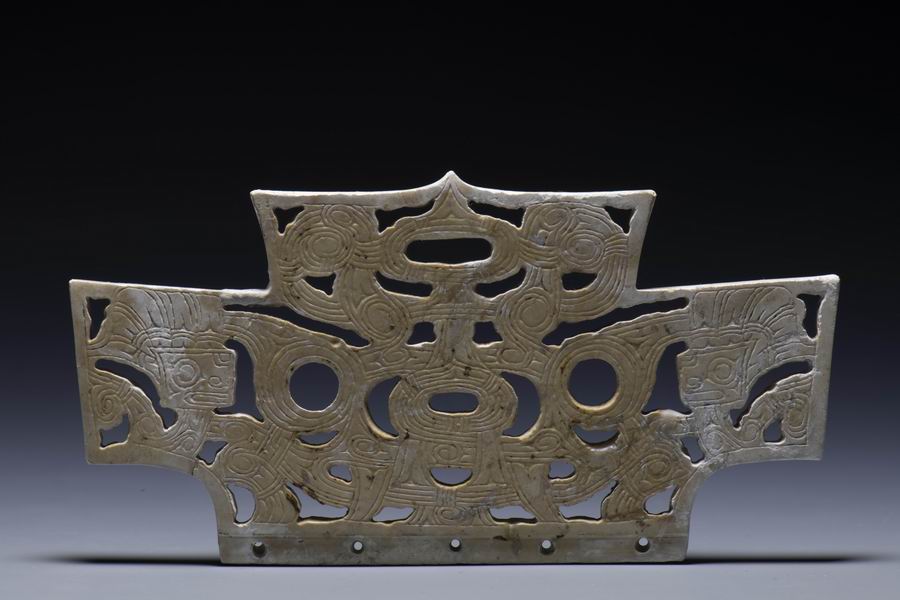
Jade Crown Decoration Fanshan M16: 4
According to Chen Jie, the exhibition this time is called "Empirical China: Songze·Liangzhu Civilization Archeology Special Exhibition". The reason why Songze must be included in the exhibition is not only because Shanghai is the name of the Songze culture, More importantly, I hope to show the overall development process of the early civilization development in the lower reaches of the Yangtze River.
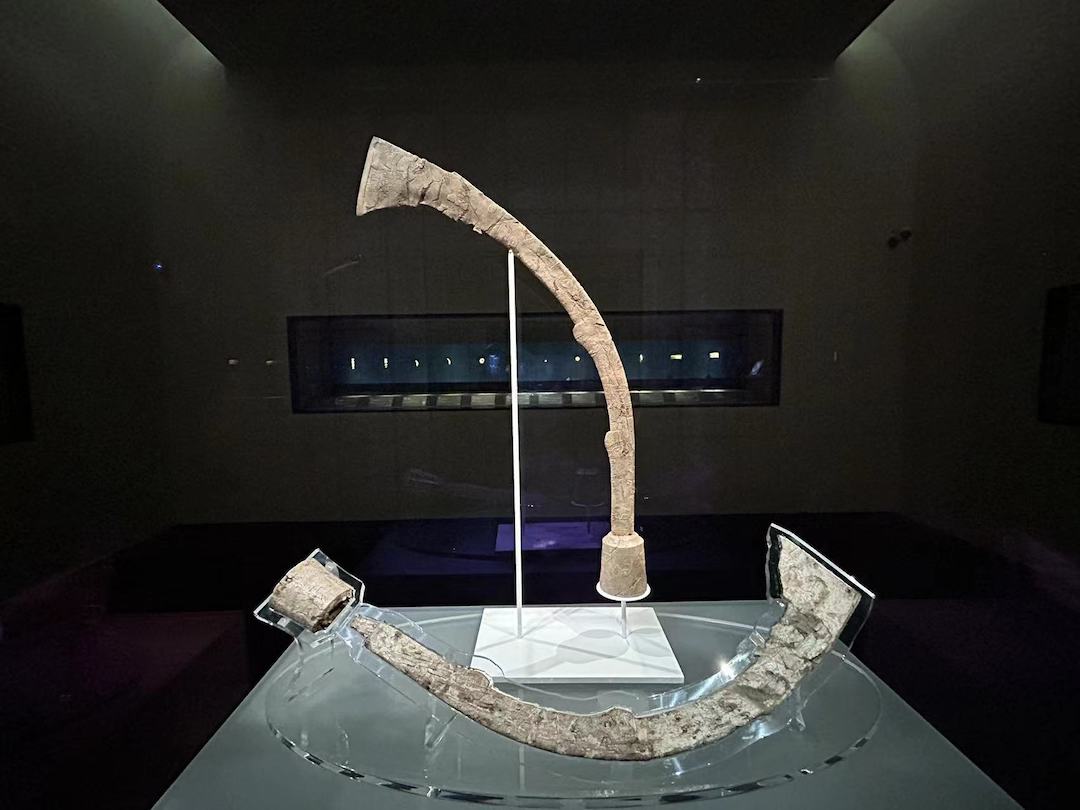
exhibition site
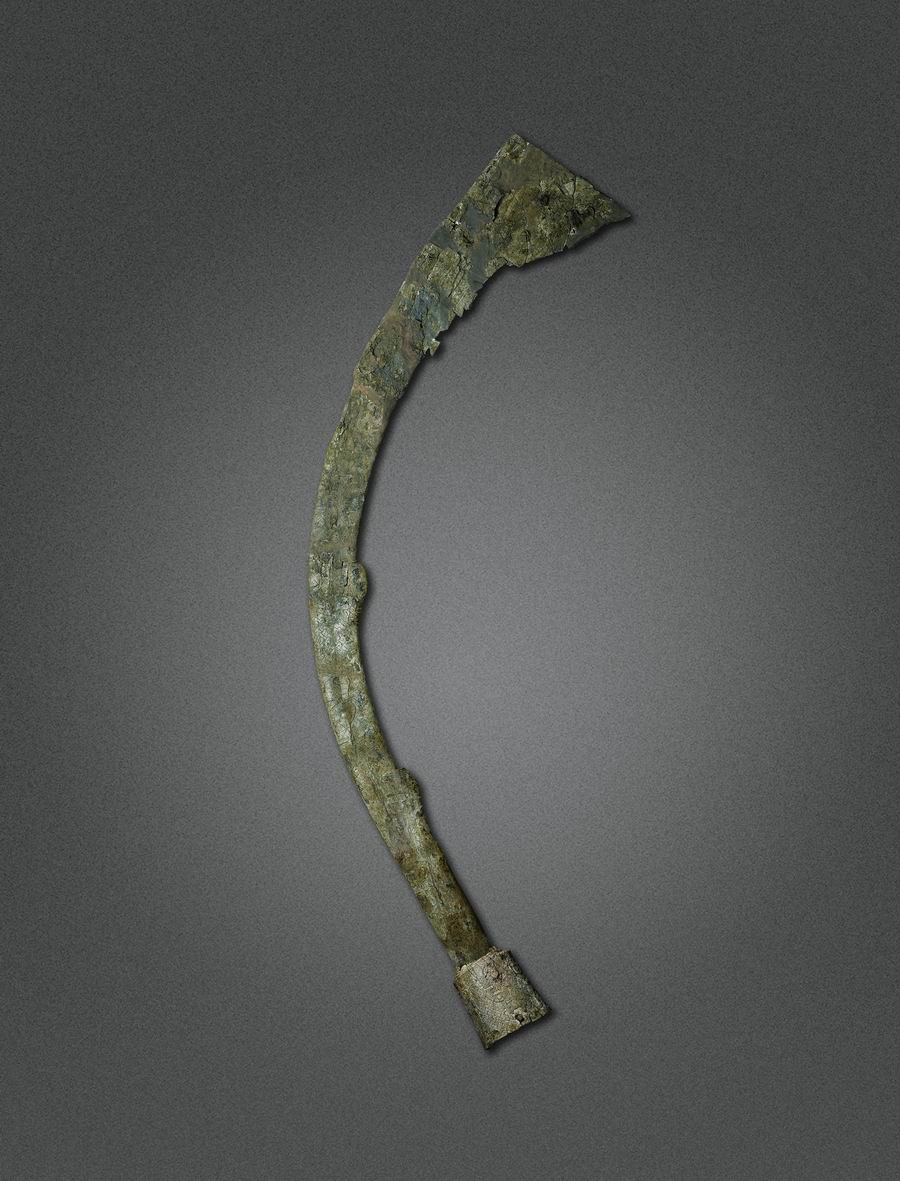
Ivory Scepter 2010QFM207:61
Chen Jie said that the Liangzhu site is considered to be a sacred place to demonstrate the 5,000-year history of Chinese civilization, and Liangzhu is also considered to be the earliest country in East Asia. However, the development of Liangzhu civilization did not happen overnight. Archaeological discoveries and research have shown that the Songze era already exhibited some characteristics of early civilizations, so it can be considered that there were obvious stratifications at that time, and the primary royal power had already emerged. "From Songze to Liangzhu, the lower reaches of the Yangtze River are undoubtedly the best case for empirically demonstrating the development of early Chinese civilization, and it is also in line with a basic academic judgment of the 5,000-year-old civilized society proposed by the Chinese Civilization Discovery Project."
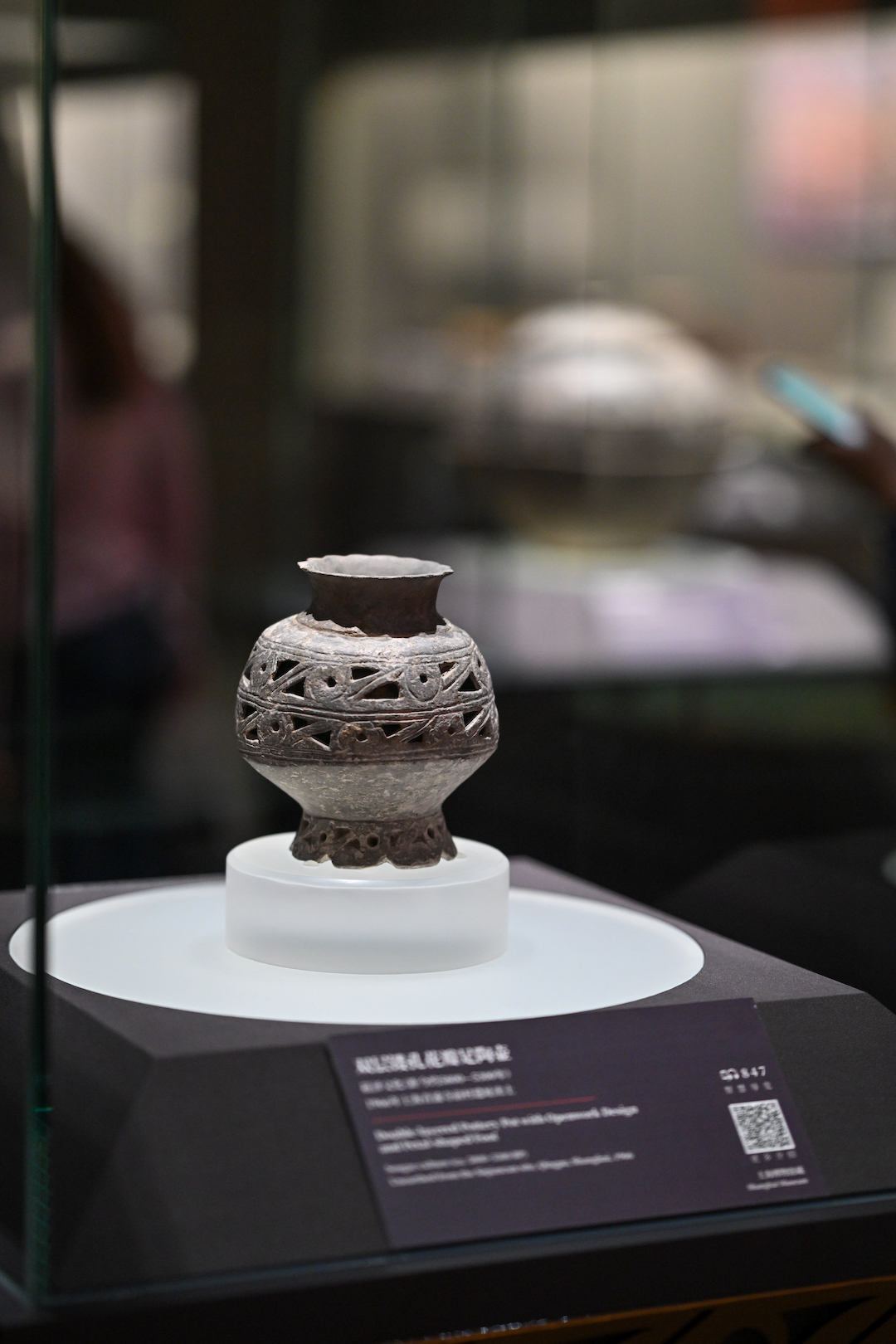
exhibition site
"From Songze to Liangzhu, the cultural unity formed by it has also found a historical source for the integration of the Yangtze River Delta." Chen Jie said that this cultural unity can be reflected in the utensils From the comparison of cultural relics, similar utensils can be seen in a large range across regions, from pottery to jade, from decoration to shape to usage habits.
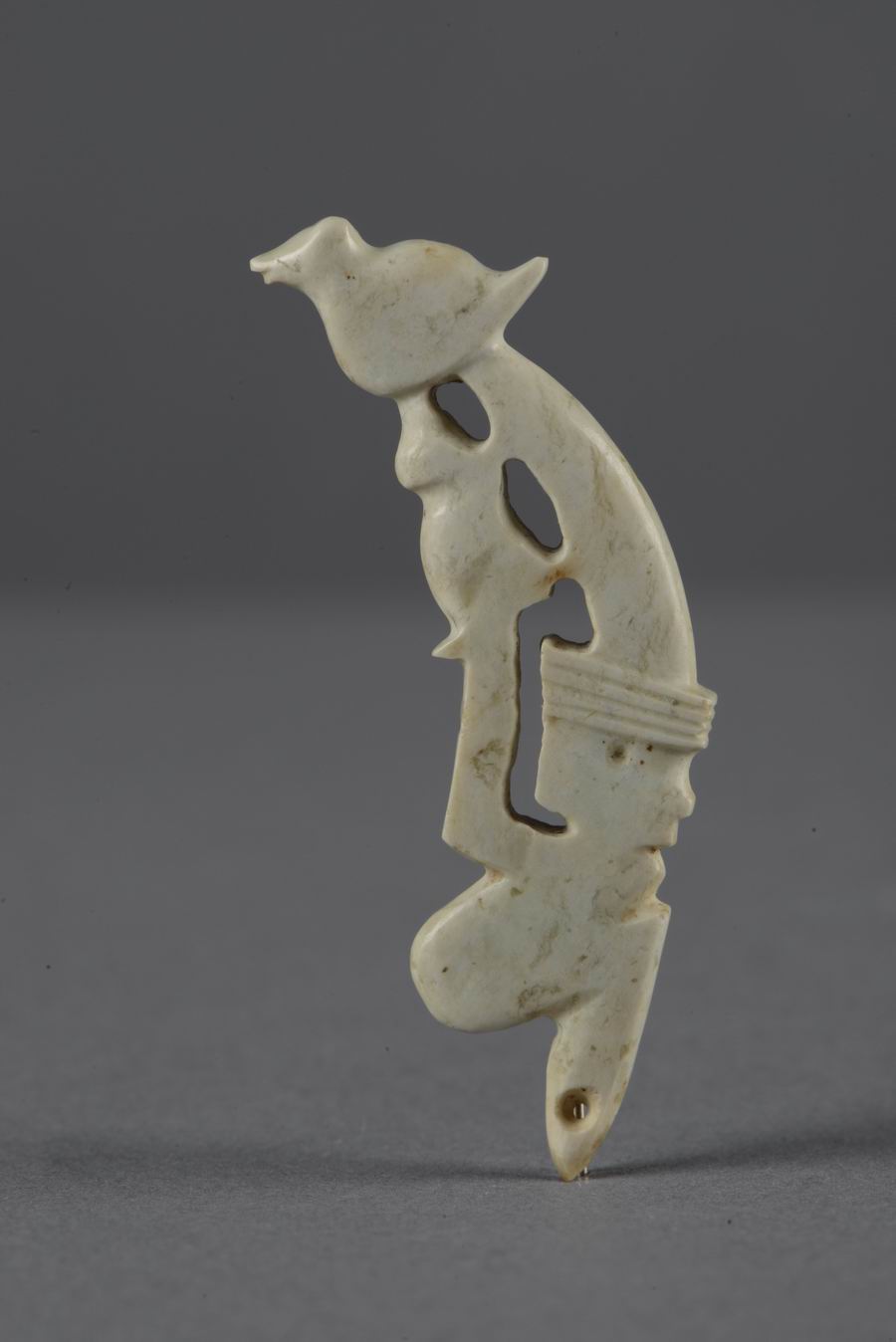
Openwork Jade Pieces of Man, Bird, Fish and Beast M77: 71
For example, the changes in the shape of tigers and eagles in the Songze period and Lingjiatan culture to the facial patterns of gods, men and animals in Liangzhu culture displayed in the unit of "Jade Civilization" reflect our early religious beliefs, from multiple gods to one God's transformation. It was precisely because of the formation of unified beliefs that an important foundation was laid for the early civilizations in the lower reaches of the Yangtze River to converge into a cultural unity.

beauties
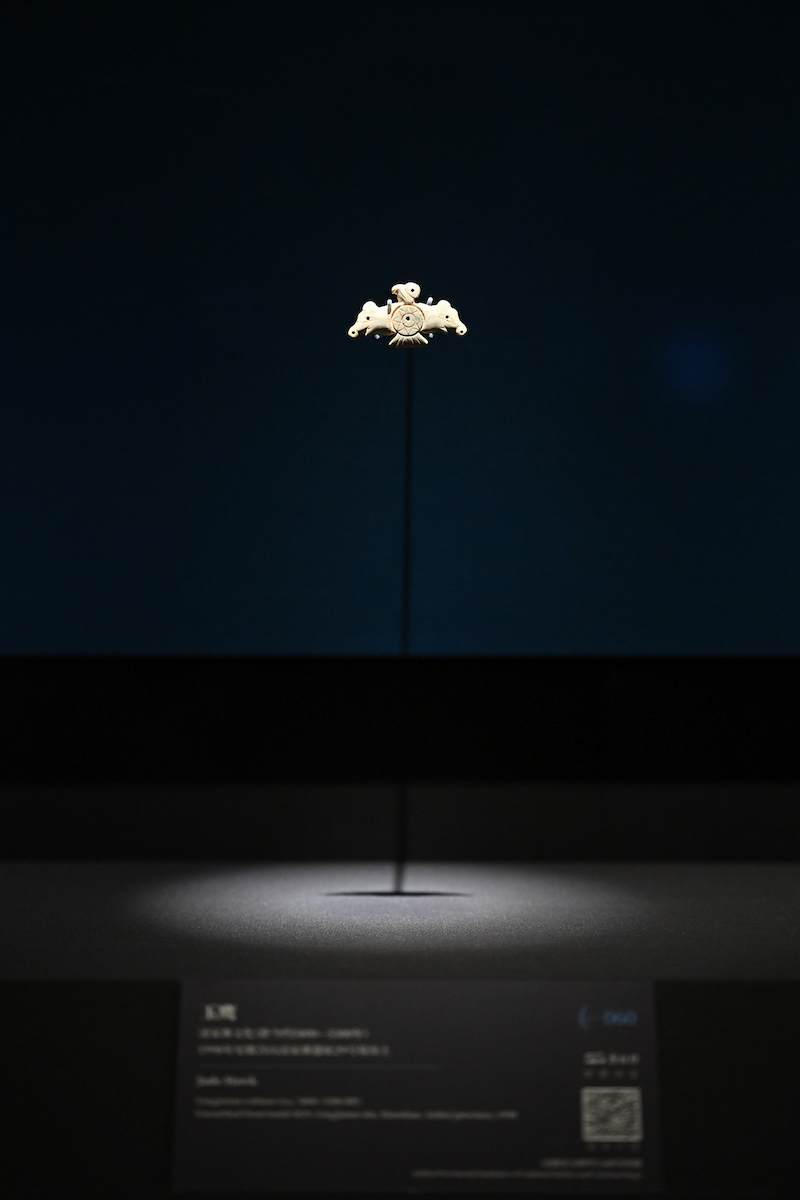
Jade Eagle 98M29 at the exhibition site: 6
Talking about the significance of holding this exhibition, Chu Xiaobo, curator of the Shanghai Museum, said that the lower reaches of the Yangtze River are the most typical representative of the development of early regional civilization in China, and an in-depth discussion of its evolution process, characteristics and influence will be helpful for in-depth understanding of the formation of multi-integrated Chinese civilization , It plays an important role in exploring the characteristics of Chinese civilization. "Only by recognizing the origin of Chinese civilization can we gain cultural confidence from the history of more than 5,000 years. This is also the mission of museum staff."
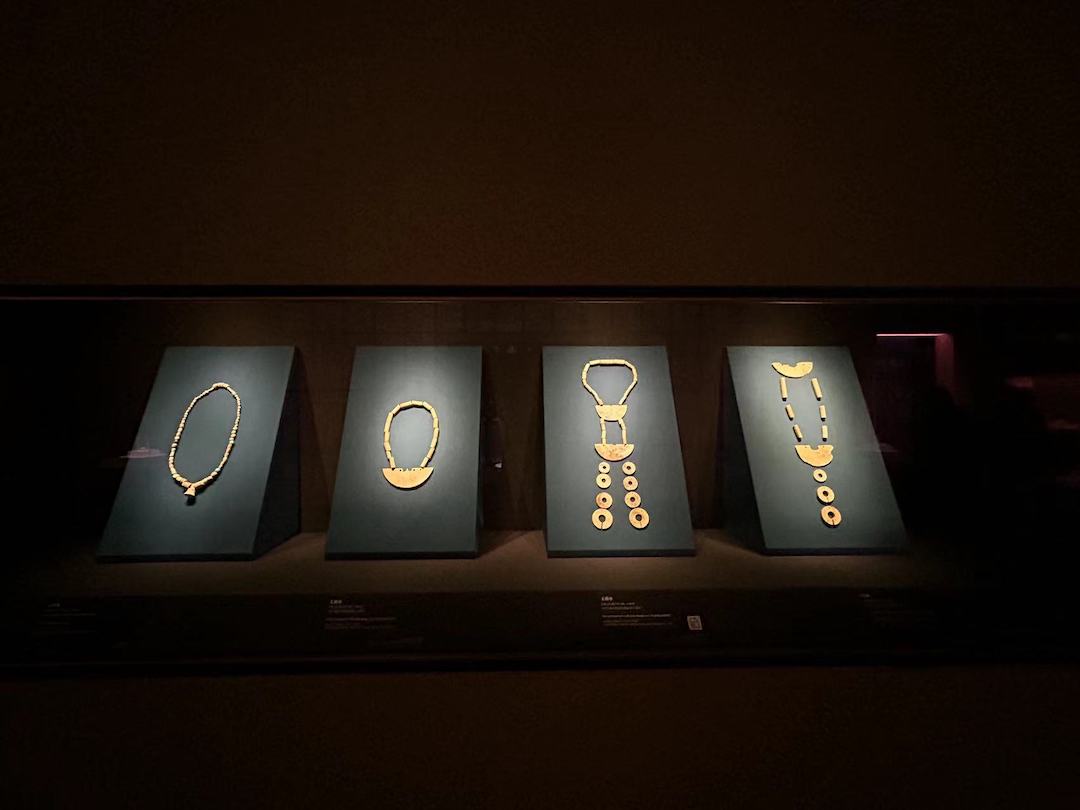
exhibition site
Highlights of the exhibition:
Unit 1: Ancient Civilizations
Archaeological data prove that China around 6,000 years ago was in the period of cultural interaction and the formation of civilization. The collision, exchange and fusion between cultures occurred during the migration and communication of human beings, which accelerated the process of social complexity. 5,800 years ago, in some settlements in the lower reaches of the Yangtze River, central settlements with a large area appeared for the first time. In terms of the number of residents, structural facilities, large buildings and high-standard tombs, etc., it everywhere reflects the power class's desire for a large amount of wealth. , Control of resources. The settlements competed with each other and continued to integrate and expand, and the society entered the "ancient country era". 5,300 years ago, the Liangzhu culture finally rose strongly, covering most of the lower reaches of the Yangtze River, and planned to build a core city in Yuhang, Zhejiang, the ancient city of Liangzhu, forming a political bond based on rice farming and jade, marking power and belief unique civilization. It can be said that the early civilization process in the lower reaches of the Yangtze River is a history of development from the accumulation of the Songze era to the rise and prosperity of the Liangzhu civilization.

Cong Wang Fanshan M12: 98-2

Jade Crown 87M15:38
This unit will take the audience to appreciate the Dongshan Village ruins and Lingjiatan ruins in the Songze era, as well as the Liangzhu ancient city ruins, Fanshan ruins, Fuquanshan ruins and Sidun ruins that reflect the Liangzhu civilization. Among them, the 88-kilogram stone pig unearthed in the Lingjiatan archaeological excavation is the earliest, largest and heaviest pig-shaped stone sculpture discovered in my country. The pig has a complete mouth, nostrils, eyes and ears, and a pair of tusks, which are very lifelike. Liangzhu's "Three Great Artifacts" unearthed from the Mausoleum of Fanshan King - "Cong King", "Yue King" and the Jade Scepter are presented together in this unit. The complete set of images of "God, Man and Animal Face" on the utensils is amazing, reflecting the exquisite micro-carving skills of Liangzhu culture, and it is also the highest symbol of power in Liangzhu society.
Unit 2: Rice Farming Civilization
As one of the unique traditional origins of rice farming, rice production and farming models in the lower reaches of the Yangtze River developed rapidly during the Songze·Liangzhu culture stage. In the Liangzhu period, stone farm tools represented by plows, sickles, and knives were systematically and widely used, and the large-scale paddy field management technology was very mature. In terms of meat, in addition to supplementing protein by hunting wild resources such as deer, pigs are widely raised as a stable meat. In addition, the natural environment with dense water nets made the ancestors in this area very good at using fishing nets to obtain aquatic products. It can be seen that the traditional dietary pattern of "rice, rice, soup and fish" in the Jiangnan area has been basically established since the Songze Liangzhu period.
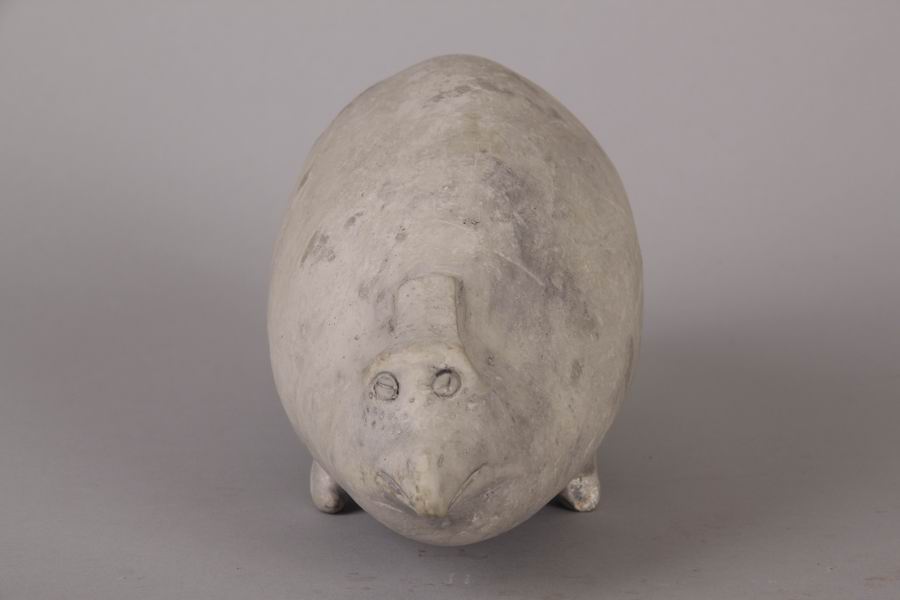
Clay gray pottery finless porpoise pot

Yuyun Tianqi M2: 24
This unit demonstrates the rice farming civilization of the Songze·Liangzhu culture stage from two aspects of "Fields Connecting Fields" and "Fishing, Hunting and Breeding". It displays the planting sticks, stone plows, double-hole stone sickles, five-hole stone knives, and stone shovels. , Shiyun field ware, jade sickle, jade yun field ware and other agricultural tools, as well as utensils with animal images such as pig-shaped pottery statues, hunting pattern pottery pots, deer-axe pattern pottery statues, fish pattern pottery pots, and dolphin-shaped gray pottery pots .
Unit 3: Handicraft Civilization
The specialization of handicraft industry is an important manifestation of the control of social resources by the early state, and it is also a driving factor for the development of civilization. When some people break away from agricultural production and become full-time handicraftsmen, it shows that social division of labor has reached a new height. As an independent production department, the handicraft industry has become more and more prominent in supporting social development with the expansion of scale, refinement of process, and specialization of types. The lower reaches of the Yangtze River are rooted in the well-developed economic soil of rice farming, and the handicraft industry is flourishing. In the Songze era, pottery and jade ware were the most prominent handicraft products. In Liangzhu, unprecedented development has been achieved in many fields such as jade production, pottery, textile, lacquered wood, and bone making, and specialized production models have gradually become prominent. At the same time, some high-end handicraft industries represented by the jade industry were monopolized by the elite.
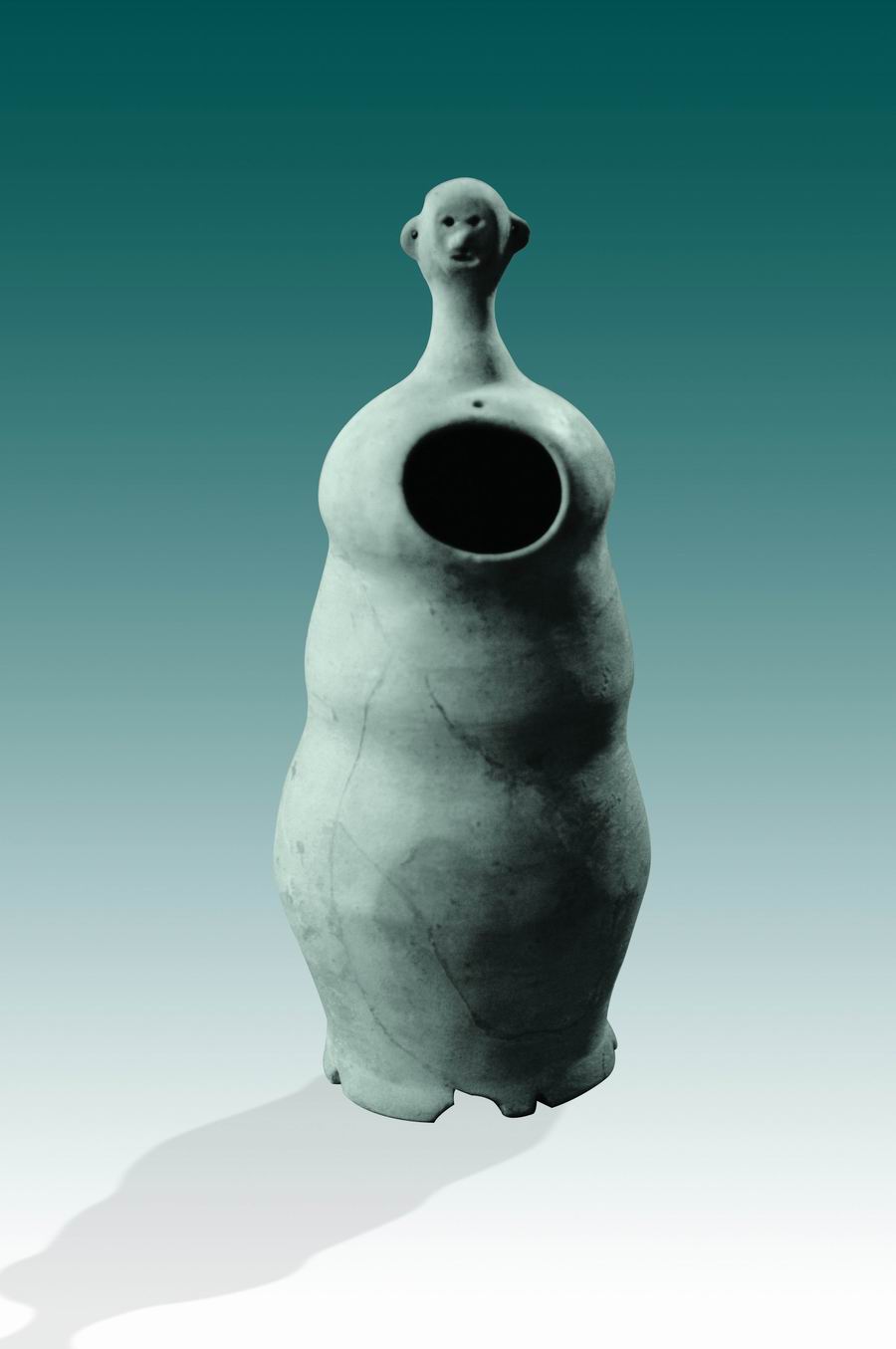
5 person head pot
The human-head pottery vase, a typical artifact of Songze Culture, is unique in shape, vivid and simple. It is the first to be seen in Neolithic sites in China, and it has high research and appreciation value. There is also a double-layer pierced pottery pot with petal feet unearthed at the site of Siqian Village in Qingpu, Shanghai. It is a rare fine piece of Neolithic pottery.
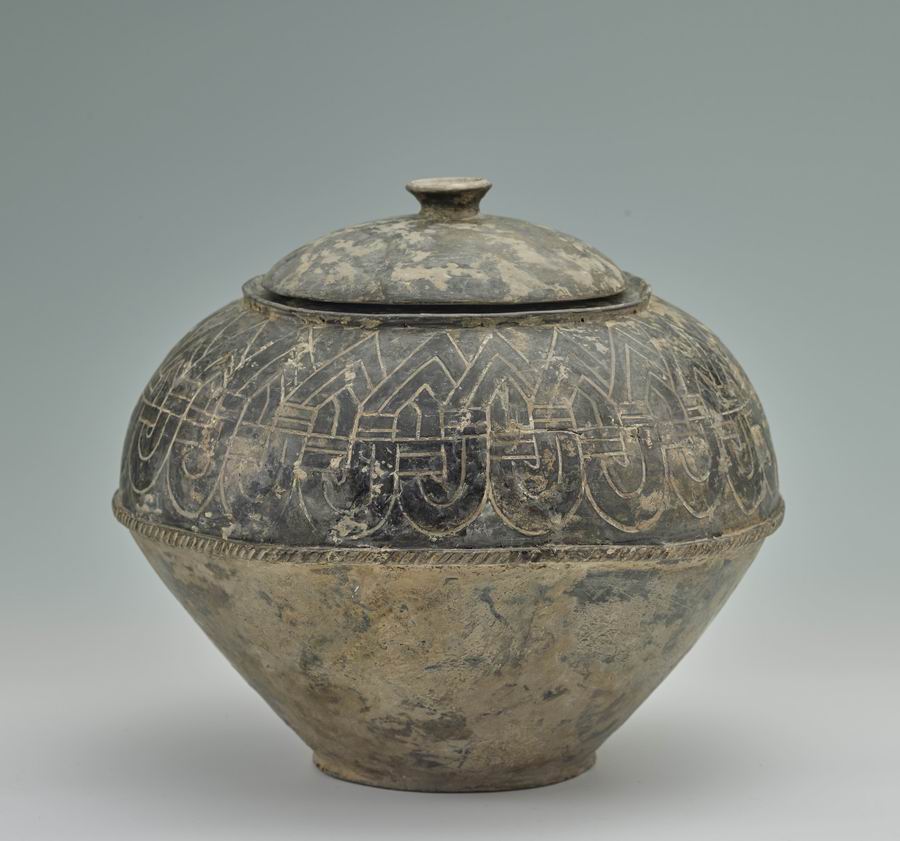
Bamboo pot with lid 1974QSM59: 2
Unit 4: Jade Civilization
Because of its rare and unique mineralogical properties, jade was endowed with a specific conceptual form by the ancestors. Every link from mining to making jade consumes a lot of social productivity, and it needs a strict and orderly social organization to support it. In the Songze era, in addition to improving the ability to identify materials, jade also developed from a simple decorative purpose to a jade ritual vessel representing status and rank. The Liangzhu civilization’s love for jade has reached an unprecedented height. They used jade to classify ranks, distinguish identities, and display power. Formed a set of jade system and social norms for different classes of people. The "Shen Emblem" pattern carved on Liangzhu jade ritual vessels highlights the ruling concept of "the unity of God and King", which is the unified belief and bond that maintains the entire wide-area country and society, reflecting a very high social cohesion. It can be said that the most important feature of the early civilization in the lower reaches of the Yangtze River is the jade civilization. The pioneering ritual jade system has had a profound impact on the development of Chinese civilization in later generations.

Ivory Scepter 2010QFM207:61
Among the cultural relics exhibited in this unit, the jade eagle unearthed at the Lingjiatan site is a combination of "eagle-pig-sun" with unique shape and rich connotation. The openwork jade human head ornaments unearthed at the Zhaolingshan site are treasures of Liangzhu culture jade, and are the earliest openwork carvings of humans, birds and animals discovered so far. The ivory scepter unearthed at the Fuquanshan site is the most beautiful prehistoric ivory product. There are two pieces in the Shanghai Museum, and the one on display this time is an authentic one and a replica. This type of ivory utensils has also unearthed similar utensils in previous archaeological excavations, but they have not been effectively preserved and restored. In the hands of cultural relic restorers of the Shanghai Museum, this fragile and exquisite ivory scepter was completely cleaned up for the first time and displayed publicly, setting a precedent in Neolithic archaeological excavations in Shanghai and even the whole country.

Jade handle 1987QFM144
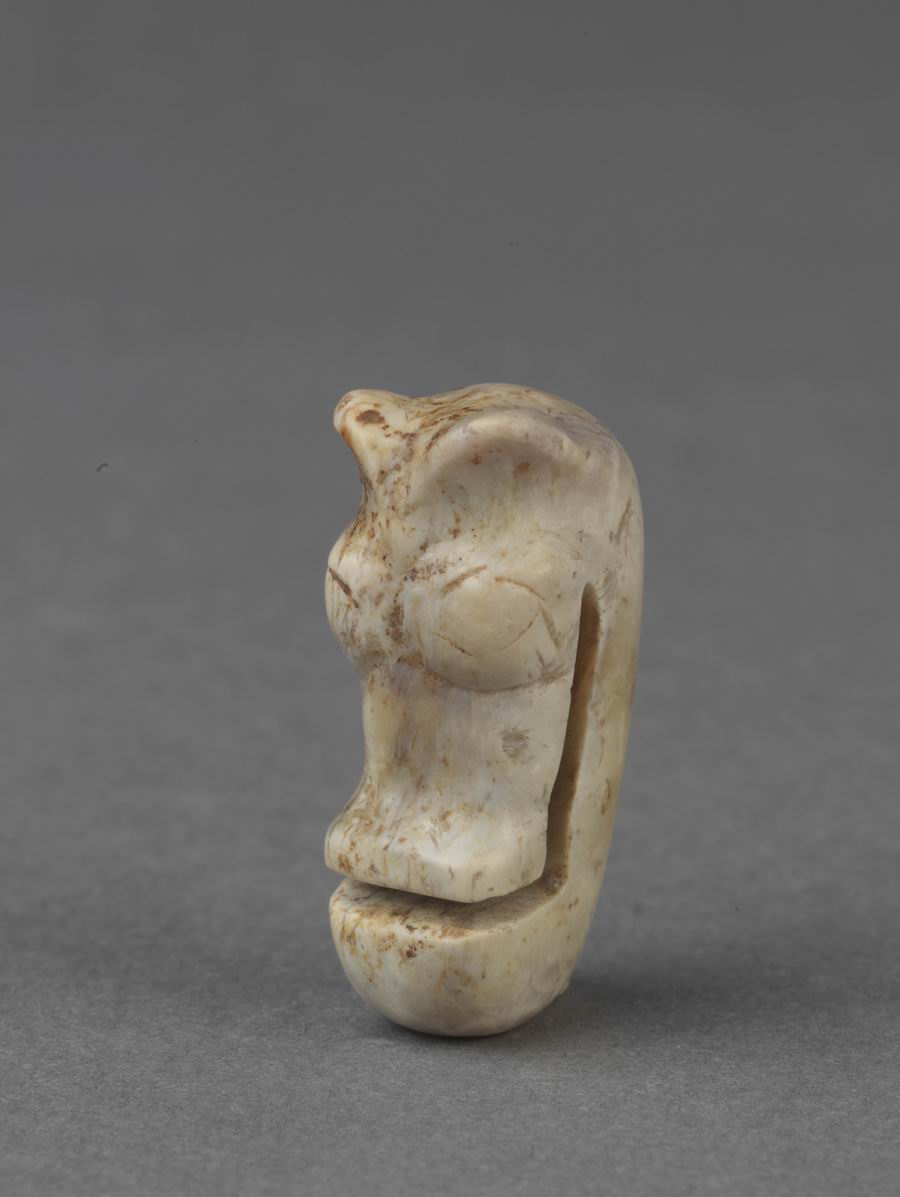
Yulong M8: 28
Note: The exhibition will be open to the public free of charge on June 20, 2023 and will continue until October 8, 2023. Considering that the exhibition period coincides with the peak period of visitor flow, in order to ensure the safety of cultural relics and provide visitors with a good viewing experience, the Shanghai Museum will implement a full reservation system for admission during this period.
